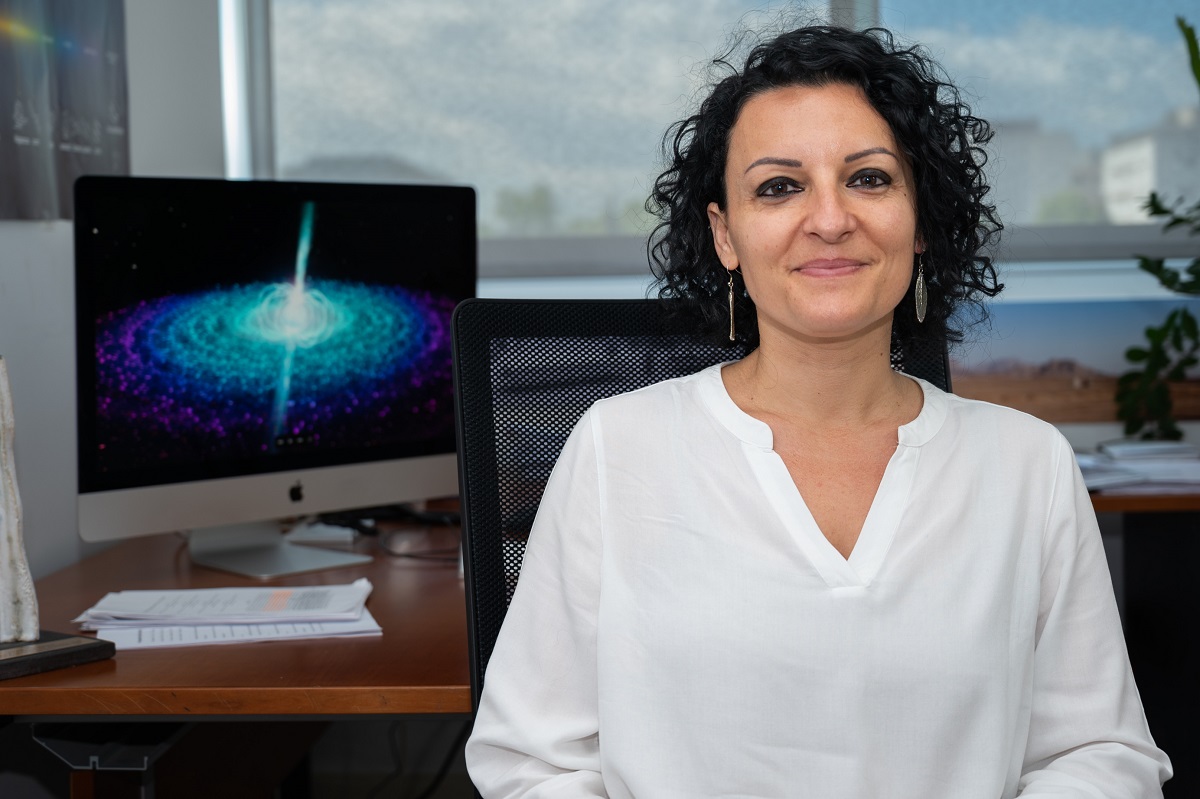The project DeepSpacePULSE obtains an ERC Proof of Concept grant from the European Research Council

Caption: Researcher Nanda Rea at the ICE-CSIC.
Credits: César Hernández/CSIC Comunicación.
The DeepSpacePULSE project, led by Nanda Rea, astrophysicist from the Institute of Space Studies of Catalonia (IEEC — Institut d’Estudis Espacials de Catalunya) at the Institute of Space Sciences (ICE-CSIC), has been the 2000th project selected to receive an ERC Proof of Concept (PoC) grant from the European Research Council (ERC).
Its goal is to study the feasibility of an autonomous navigation unit using X-rays emitted by pulsars, that will improve almost all aspects of previous similar systems making these satellite positioning devices competitive in both the public and private space markets. “DeepSpacePULSE represents a revolutionary change in space navigation, taking mission autonomy to new limits,” says Nanda Rea.
The DeepSpacePULSE project will receive €150,000 as funding through the ERC PoC grant to study the viability of this new concept of autonomous navigation system for 18 months. The team, with an important contribution from Juan de la Cierva researcher Emilie Parent, receives the support of the Spanish company Sener, with whom it has already worked jointly within the framework of a contract with the European Space Agency (ESA) for the analysis of this kind of systems.
Pulsars are astronomical objects resulting from supernova explosions of very massive stars. In addition, they emit regular pulses of electromagnetic radiation, so they function as clocks with unprecedented stability. This makes them a perfect spatial GPS system. To date, around three thousand pulsars have been detected in the Milky Way.
Currently, deep space travel is limited by the energy and time required to exchange information with Earth, especially regarding the satellite positioning system and orbit determination. The first step for future deep space exploration is to develop technology that allows any space mission to autonomously guide the ship. The DeepSpacePULSE Pulsar Navigation System is expected to be an efficient, small and lightweight navigation unit to be installed on future space missions.
The novel pulsar navigation system has recently been tested by NASA on the International Space Station with an instrument that is still too large and heavy to be commercialized. With DeepSpacePULSE, the goal is to reduce the size and increase the precision of this system, which would reduce costs compared to standard positioning systems and make future navigation in the solar system and deep space possible. “Starting this project is a great challenge for me; I will learn how to go from basic science to engineering development and technological applications, something that fascinates me,” says Nanda Rea.
The system is expected to weigh around 10 kg, be the size of a microwave and use a new pulsar observation plan that will possibly allow the satellite to maintain autonomous positioning for several centuries, that possibly can go outside our solar system and can return to Earth autonomously.
“Our experience in pulsar observations gives us a unique advantage to develop this innovative technology that will transform space exploration,” adds Nanda Rea in relation to the ERC Consolidator MAGNESIA project, which she considers “a crucial springboard to the success of this new idea.” Within the MAGNESIA project, a census of magnetars is being developed through an innovative approach that will create the first synthetic model of pulsar population in our galaxy.
Caption: Nanda Rea, IEEC astrophysicist at the ICE-CSIC, has been awarded the 2000th ERC Proof of Concept grant.
Credits: European Research Council.
